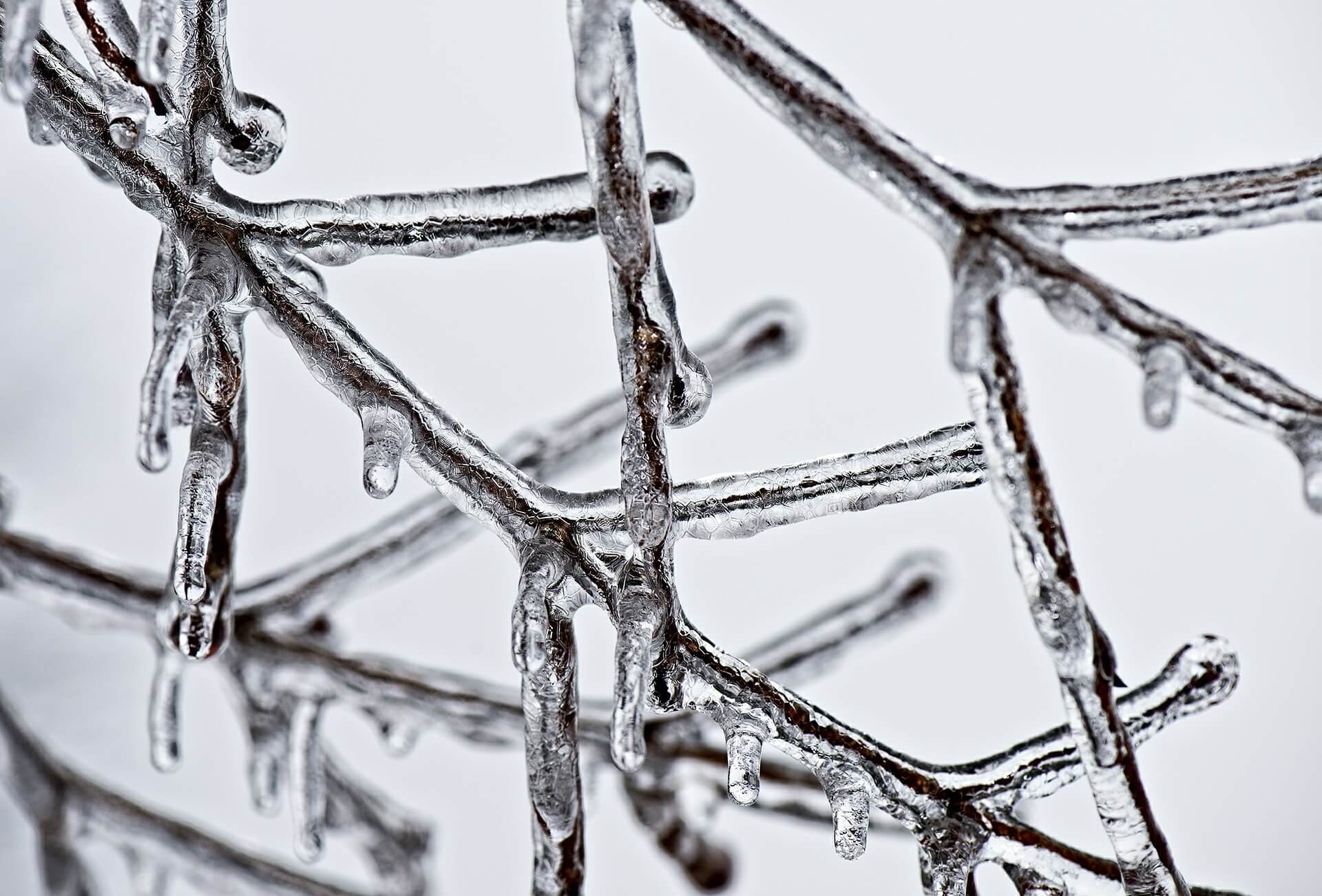Evergreens are a focal point for your winter landscape. Their beautiful green branches coated with snow are the picture of seasonal perfection. While they may look invulnerable maintaining their looks against the elements, they do face one issue during winter and, surprisingly, it’s not the cold. Winter weather, particularly on Long Island, can be very dry, which is the reason you develop dry, flaky skin. And in much the same way as you need lotion to help keep moisture in, evergreens need something called anti-desiccant spray to help keep them from experiencing “winter burn” which is caused when trees and hedges lose too much of their vital fluids in harsh winter weather. While dry skin can make you itchy and miserable, drying out can actually kill your evergreens.
In winter when the ground is frozen your evergreens cannot draw water up through their roots because the groundwater is frozen. This isn’t a problem for deciduous trees like oaks and maples, because they shed their leaves and therefore do not have surface area through which to lose water. Because evergreens retain their leaves through the winter, they can suffer desiccation injury when the water loss through their needles is greater than the water they can take up through their roots from the frozen ground. Keeping water in the leaves of these trees and shrubs is vital to prevent winter desiccation, and that’s where anti-desiccants come in.
What kinds of plants need anti-desiccant spray?
While most evergreens can benefit from an anti-desiccant treatment, there are a few that are more prone to winter injury than others. Arborvitae, cedar, cypress, juniper, and pine are some of the evergreens that need help handling the winter weather. Broadleaf evergreens such as azalea, boxwood, holly, and rhododendron are also great candidates for anti-desiccant treatment. Even shrubs with tender stems, such as roses and hydrangea, can benefit from treatment. One word of warning before we get to treatment, make sure that you do NOT spray waxy-blue conifers such as blue spruce because they have a natural coating of wax and you want to avoid damaging them as they have evolved to protect themselves.
How to apply anti-desiccant spray
The first thing to consider when applying anti-desiccants is the weather. You’ll want to wait for a dry day in the 40s through the 50s, and you’ll want to make sure that there won’t be any rain for a few days after application. It’s important that your trees and shrubs are completely dry when applying the spray and after application; the spray needs time to dry, so you will want to ensure a day or two before rain is due.
Spraying should not happen too early. It’s important to wait until at least December before applying anti-desiccant spray. Trees need to be completely dormant before spraying. This means that their water has been moving down to the roots from the leaves. Usually, it takes at least a few periods of freezing weather for this to happen, so December is a good time to apply your treatment. Applying too early can result in water becoming trapped in the leaves, which can burst plant cells as the leaves freeze in colder weather.
Because plants lose water from both the top and the bottom of their leaves, you will need to make sure you completely coat all surfaces of your trees and hedges.
Anti-desiccants are available in most home improvement stores with names like Wilt-Pruf and Wilt Stop. It is extremely important to follow the label instructions exactly, or you can damage your plants.
If you decide that you’d rather have a professional do the work for you, schedule an appointment with an experienced company such as Organically Green. They have a number of treatments for trees and shrubs for any time of year that can keep them looking green and healthy all spring and summer long. Their anti-desiccant sprays are safe for your family and pets and will protect your trees throughout the cold weather months. So if you’d prefer to let professionals protect your trees instead of doing it on your own, give them a call, or visit them on the web.

